Did you know there is estimated to be over 30 recognised species of mint in the Mentha genus, with over 600 varieties within these species? Mint species readily cross-pollinate, which has lead to many natural and cultivated hybrids. The result has been a wide array of flavours and scent profiles within the mint world.
Popular Mint Varieties
Some of the most common and popular mint varieties include:
- Peppermint (Mentha × piperita) – a hybrid of water mint and spearmint, known for its strong menthol flavour.
- Spearmint (Mentha spicata) – a popular culinary mint that’s sweeter and milder than peppermint.
- Moroccan Mint (Mentha spicata var. crispa 'Moroccan') – a spearmint variety commonly used for tea.
- Water Mint (Mentha aquatica) – native to Europe and commonly found along riversides, marshes, and damp meadows.
- Apple Mint (Mentha suaveolens) – a fragrant mint with fuzzy leaves, a mild fruity taste and a slight apple scent.
- Pineapple Mint (Mentha suaveolens ‘variegata’) – a variegated form of apple mint, with a fruity, pineapple-like taste.
- Chocolate Mint (Mentha × piperita f. citrata ‘Chocolate’) – a peppermint variety with a cocoa-like aroma.
Mint in the UK
There are several species of mint that are native to the UK, particularly those that thrive in damp, wild habitats. Most notably: water mint; wild mint (also known as corn mint or field mint); and apple mint. While spearmint and peppermint are not strictly native to the UK, they have naturalised widely across the UK. Many mints in the UK are natural hybrids, especially where species grow in close proximity.
Great for Pollinators, too
If you're planting mint in your garden, it's not just great for culinary uses—it’s also excellent for supporting local biodiversity. Mint plants are highly attractive to a variety of pollinators due to their aromatic oils, nectar-rich flowers, and long blooming period. The main pollinators of mint are: bees (including honeybees, bumblebees and solitary bees), butterflies and moths, flies and hoverflies, and even occasionally some beetles.
Mint Essential Oils (there are more than you think!)
When it comes to aromatherapy and cosmetics, mint has been valued for generations due to its refreshing and invigorating aromas. But did you know there are far more mint essential oils than just peppermint oil? While all mint oils will generally share common themes (such as ‘fresh’ and ‘stimulating’), each individual type can also offer distinct benefits. Here's a guide to some of the most popular varieties:
Peppermint (Mentha piperita) Oil
Peppermint oil is high in menthol, giving it a strong, cooling sensation and sharp aroma. It's traditionally used for alleviating digestive issues (such as nausea and vomiting), relieving pain (such as headaches, muscle aches and joint pain), easing sinus congestion, and even improving focus, alertness, and mood. There’s no doubt that it’s the most popular mint essential oil for a reason; it’s incredibly versatile with a wide range of uses, and a staple addition to anyone’s essential oil collection.
For a gentle peppermint variety with a sweet, chocolatey aroma, try ‘Black Mitcham’ peppermint oil. It’s distilled from dark-stemmed Mentha piperita, and particularly nice for indulgent massage or spa experiences.
Spearmint (Mentha spicata) Oil
Sweeter and milder than peppermint, spearmint oil is rich in carvone, which gives it its distinctive scent. Similarly to peppermint oil, spearmint oil is traditionally used to help with issues like indigestion, nausea, and vomiting, as well as soothe respiratory problems like coughs and congestion. It’s also popular for its calming, uplifting, and stress-reducing effects, and some studies even suggest that it may provide benefits for hormonal balance.
Spearmint oil is ideal for those seeking a lighter and sweeter mint aroma.
Nana Mint (Mentha spicata nana) Oil
This variety has a soft, delicate scent and is a good alternative to peppermint or spearmint oil. The herb is common in teas – it’s a particularly popular choice for Moroccan mint tea – and is used to aid digestion and promote relaxation. The oil is uplifting and energising, with a more gentle aroma than peppermint.
Field Mint / Corn Mint (Mentha arvensis) Oil
A primary source of menthol crystals, field mint oil has a powerful, minty aroma and a yellow-green hue. It has a high menthol content, making it particularly popular for respiratory support, but also for soothing muscles and joints. It is widely used in personal care for its cooling effects, and its bold scent is favoured in both the fragrance and flavour industries.
Horse Mint (Mentha longifolia) Oil
Horse mint has a strong, camphor-like scent. It’s popular for its refreshing aroma and antimicrobial properties, making it a popular choice for skincare products aimed at treating acne and improving skin clarity.
Bergamot Mint (Mentha citrata) Oil
Despite its name, bergamot mint is not related to the bergamot fruit. It is a perennial herb with heart-shaped leaves and violet flowers. Bergamot mint oil has a fresh, herbaceous and sweet minty aroma, with subtle citrus and floral notes. Its refreshing, unique scent is ideal as a mood enhancer and to help relieve stress.
Pennyroyal (Mentha pulegium) Oil
Pennyroyal oil has a pungent aroma that’s similar to peppermint, but with sweet and herbaceous notes. It is traditionally used as a potent natural insect repellent. However, it’s important to note that pennyroyal oil can be toxic, and should not be used internally.
Andean Mint (Minthostachys mollis) Oil
Also known as Muña essential oil, andean mint is less commonly available. It comes from a mint species that thrives in the Peruvian Andes. It has a fresh and minty aroma with hints of eucalyptus. It is traditionally used to support respiratory health, but is also used to help to ease low mood, invigorate the body and mind, and improve concentration and memory due to its stimulating aroma.
Our Go-To Mint Oils
Here at Songbird Naturals, we use both Peppermint Oil and Spearmint Oil in our Tea Tree & Mint Reflexology Wax and our Peppermint Lip Balm to give the perfect minty aroma. We enjoy the strong, refreshing, peppery notes of peppermint coupled with the sweeter tones of spearmint.
We also use a little Spearmint Oil in our Chai Lip Balm as a refreshing balance to the sweet and spicy oils in the blend. Peppermint Oil and Menthol is added to our Throat and Chest Balm, and Menthol is also found in our Cooling and Soothing Balm to aid in the cooling sensation.
From cooling and invigorating peppermint to the exotic andean mint, each type of mint essential oil offers unique characteristics and benefits, while sharing the common refreshing traits of the mint family. Whether you’re using them for respiratory support, aches and pains, emotional balance or mental clarity, mint oils are a popular and versatile addition to your wellness toolkit.
And if you’re a keen mint-lover, why not grow a selection of mint at home, too? It’s easy to grow in pots, and you’ll be helping to improve biodiversity in addition to having a refreshing herb to use in teas and cooking whenever the mood takes you.

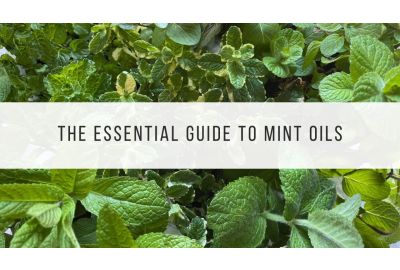
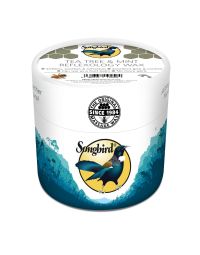
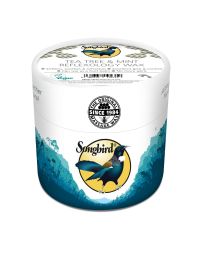
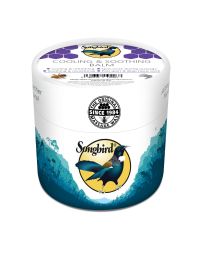
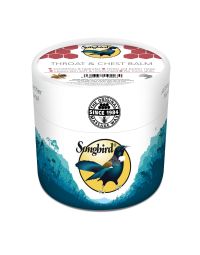
 Processing
Processing